By Graham Hancock
Photographs by Santha Faiia
For more than a year I’ve been deeply immersed in a major new project that involves Karahan Tepe, in Turkey’s Anatolia region, it’s better-known sister site Gobekli Tepe, and many other enigmatic ancient sites in many different parts of the world. I was in Turkey in November and December 2020 in connection with this project and, at Karahan Tepe, we found a Turkish archaeological team far advanced in a series of new excavations that are bringing to light a mysterious hidden chapter in the past of humanity.
Out of consideration for the archaeologists who kindly gave us access to their excavations before they’d yet made any official announcements about what they’d found, I agreed not to share anything publicly about my visit until the site was officially “introduced to the world” – which has now happened (on 24 September 2021, see reports here https://www.cnnturk.com/amp/turkiye/gobeklitepe-gibi-12-buyuk-kesif-daha-geliyor-insanligin-sirrini-taslarin-dili-anlatacak; and here https://www.dailymail.co.uk/sciencetech/article-10050217/Stunning-carvings-human-figures-heads-uncovered-Karahantepe.htm).
I therefore feel comfortable in sharing below a selection of Santha’s photographs of some of what is being revealed.
Click on any image to enlarge:
Graham Hancock with Dr. Necmi Karul of Istanbul University, lead archaeologist at Karahan Tepe.
Above: Views of the deep enclosure at Karahan Tepe
I found this place eerie, unsettling and powerful. The enclosure itself is entirely cut down into and carved out of solid bedrock. Ten of the pillars within the enclosure are also directly carved out of the bedrock to which they remain connected at their bases. The eleventh, notably curved, pillar is freestanding and rests in a shallow groove. Some of the archaeologists working on the site speculate that it might have been used to produce tones, like a tuning-fork or musical instrument — a suggestion that is enhanced by evidence that the enclosure once contained water (which could perhaps have been used to modulate tones) to a depth of up to a metre. There is a general assumption that the other pillars in the enclosure are phallic symbols and this may very well be true. However, consideration might usefully be given to an alternative possibility. Nearby Gobekli Tepe, Karahan Tepe’s famous “sister site”, has a very distinctive name, often translated “Potbelly Hill” but more accurately rendered as “Hill of the Navel”
This invites us to consider the possibility that Gobekli Tepe was recognised as an Omphalos or “Navel of the Earth”, a notion found at other ancient sites around the world (Delphi in Greece, Cuzco in Peru, the Temple Mount in Jerusalem and Easter Island in the Pacific to name but a few) that are connected in myths and traditions to geodesy – the science of accurately measuring and understanding the Earth’s geometric shape and orientation in space. Could Karahan Tepe also have been one of these “navel” sites, and could the rock-hewn pillars represent not phalli but omphali?
Immediately visible from the entrance (see below) the most compelling mystery of Karahan Tepe is this inscrutable human face. Mounted on a sinuous, serpent-like neck it seems to thrust itself forward out of the bedrock
Karahan Tepe in context
The Turkish prehistoric site of Gobekli Tepe, which I wrote about extensively in my 2015 book Magicians of the Gods, turned archaeological timelines upside down when it was confirmed to be 11,600 years old. But Gobekli Tepe was just the beginning. Now a dozen other sites of similar antiquity are under excavation in the so-called “Stone Hills” area, a zone of intense interest to archaeologists extending for 100 square kilometres around Gobekli Tepe.
The region is gearing itself up “to compete with the Egyptian pyramids” according to local officials. Gobekli Tepe is already open to the public, Karahan Tepe will open in 2022, and it is expected that other sites will also begin to welcome visitors when excavations are complete.
Santha and I first made our way to Gobekli Tepe in 2013, before its current canopy and other amenities were put in place.
Our first visit to Karahan Tepe was in 2014. We found the site almost completely unexcavated and unattended as Santha’s photographs from that visit show.
Knowing what has been discovered beneath the earth at Karahan Tepe between 2014 and 2021 I await further discoveries in the Stone Hills area with confident anticipation. As Karahan Tepe and Gobekli Tepe both show, seemingly unpromising landscapes in this part of Turkey conceal archaeological treasures of the first magnitude.
A rethink of everything we’ve been taught about the origins of civilization is long overdue.






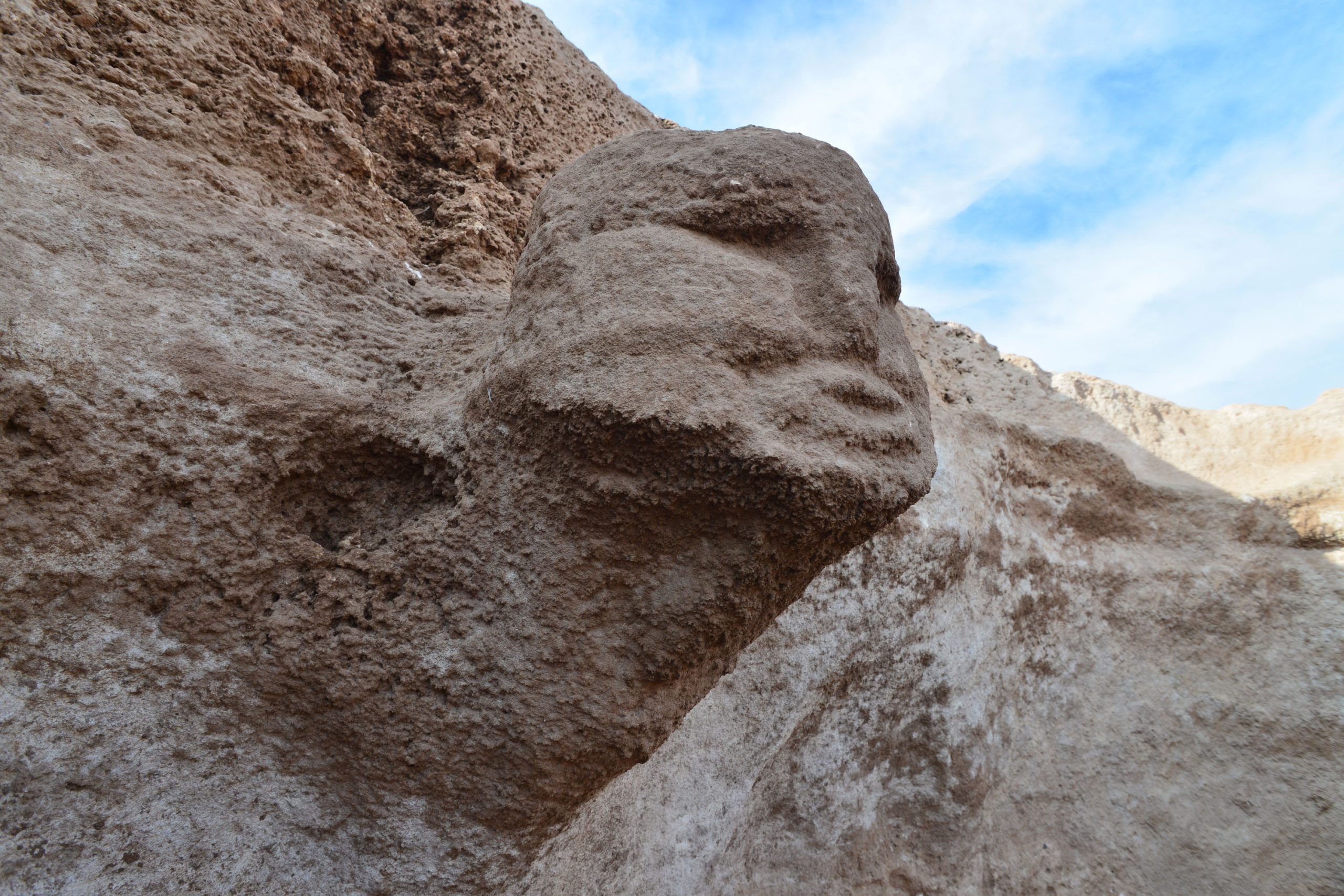
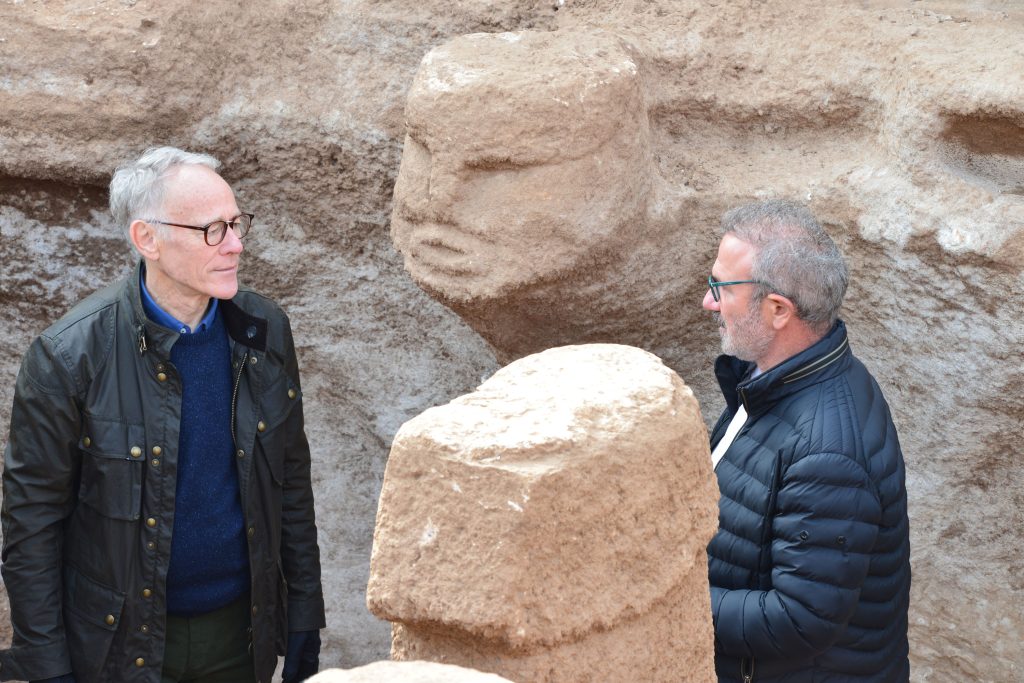


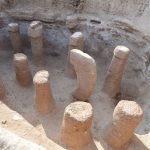

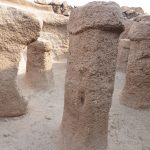

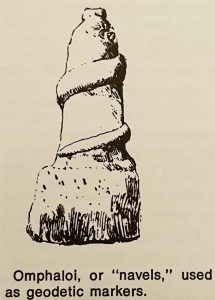

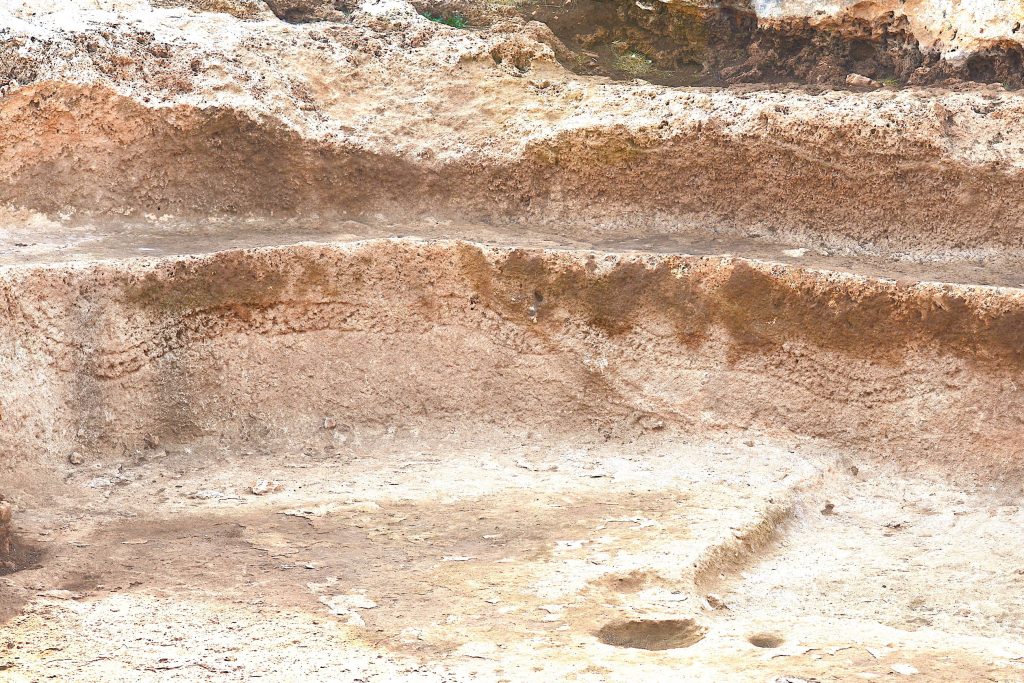

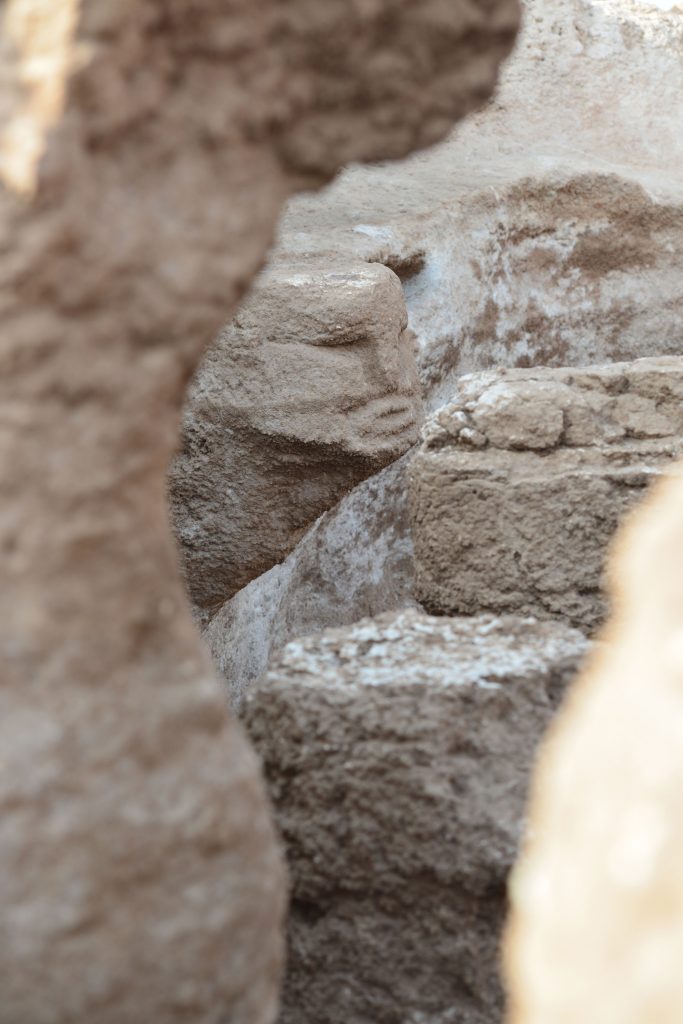



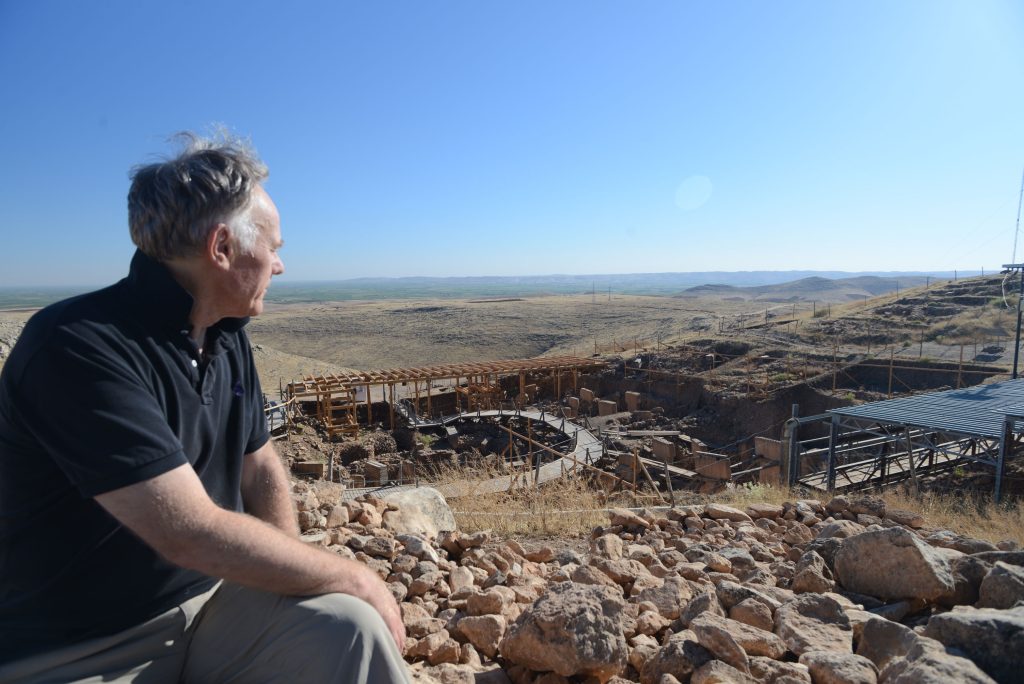
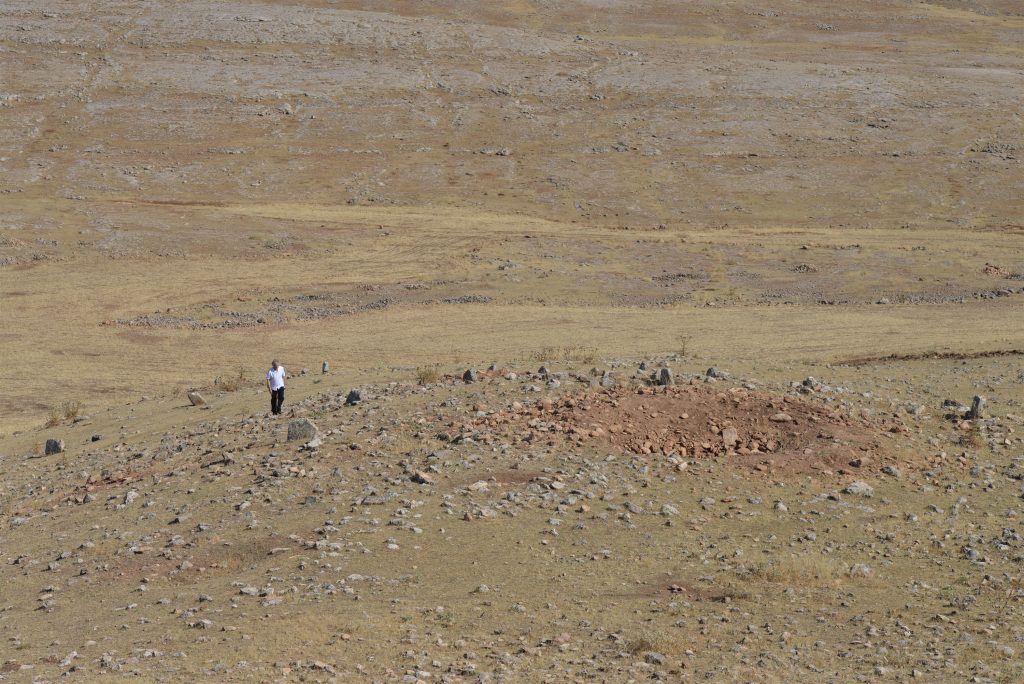
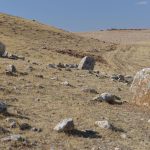
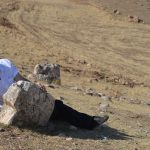


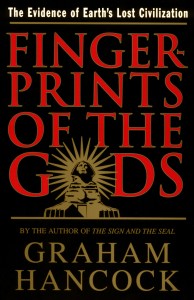
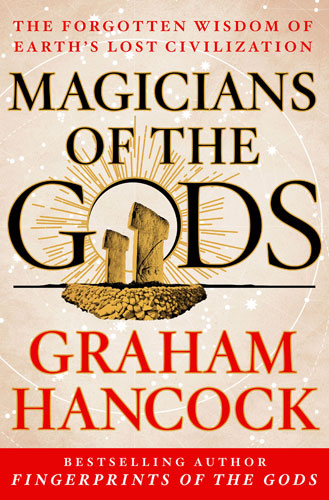
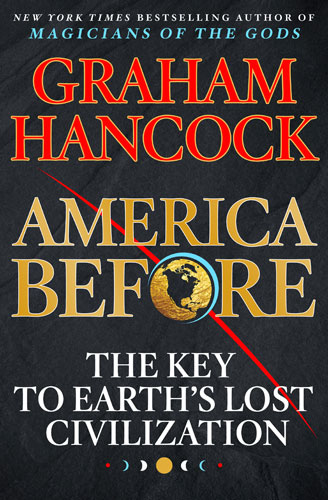
This is truly fascinating. Thank you so much for publishing information about this historic site.
Thank you Heidi. Glad you found the article useful.
Best wishes
Graham
Absolutely amazing news Graham, been following your work fir years now and it doesn’t surprise me that so called archeologists try to discount your work. Screw them keep it up!.
Hi Tony,
Thank you for the encouragement and solidarity. Much appreciated!
Best wishes
Graham
Thank you, Graham, for your efforts in bringing us new information on Gobekli Tepe and its sister sites. If we are lucky, you have another book in the works on lost civilizations. Thanks again.
Thank you CM, and I do have another book in the works.
All the best,
Graham
Best news I’ve heard all day!
Really appreciate your work Graham. I admire you answering your calling
Fascinating.
Many thanks Jesse
All the best
Graham
Mushrooms look very phallus like
Agreed. That is another possible interpretation of the pillars. Visionary substances were almost certainly used at Gobekli Tepe and Karahan Tepe.
Best wishes
Graham
Evolucian, Karahan pillars were probably all flat T-shapes, flat on top to hold roof beams, T-niches below for straps to hold the beams, flat because they quarry from layers. Some here, and elsewhere, became rounded due to quarry damage, or usage damage, and exposure above the soil infill. The art does not indicate mushroom shapes. The snakes with large heads are a known local species.
The T-shapes may have had, or may had acquired, the meaning of foundation pegs. These were usually cone-shaped with animal heads and perhaps forelegs, such as one found in a bench at Gobekli.
Mushroom-shaped stones do appear in some sites in Europe and Mexico. Uncertain still whether they are represent muscaria species, or whether they are plugs for ‘soul’ holes in the sides of dolmens with slab walls. These holes were probably opened from time to time for rituals or to add a body of a clan member. Or perhaps both symbolic and practical.
Thank you Graham for breaking news from the coalface of archaeology. Perhaps the Harran area will force anthropology and the other human sciences (history, art history, psychology, sociology, etc) to study culture as a naturally given set of crafts, innate in our species and macro environment, instead of the assumed “invented, developed, diffused, evolved” paradigm that science and popular science likes to sustain. Biology, culture, and technology, are three different things, with three different maturity curves. Karahan Tepe is a good opportunity to study these three curves.
Karahan, according to earlier publications, is about 5km south-east of a former wadi stream paleo-channel of 500m. This may have been a game path enabling easy hunting or trapping. As at Gobekli, the houses or communal houses are on a high point, here about 500m x 250m, on the north and east slope. Sunken houses are still built in northern Europe. Perhaps the head with pouted lips pictures a wind. Some houses seem to have engravings of one species dominating, supporting the Gobekli artworks of specific animals on hut roofs as totems, perhaps of a family, or seasonal festival, or ‘troupe’ (as in Hopi kachina groups). Water cisterns are oval, as at Gobekli (Hauptmann 1999). Karahan has about 266 pillars (Celik 2000), some from bedrock, some unfinished. The site is at N 37 05’ 30”, E 39 18’ 7” in the Tektek range, 7km from Harran ENE, on the Harran Plain east edge, and 64km east of Urfa. Gobekli area pillars probably served as a base for wooden rafters to carry a dome roof (‘womb’) of skins, reeds, or sods. T-shaped pillars are good for tying down beams by leather straps (given purchase by some dents in the top, as at Gobekli), and for keeping the pillars in place.
Perhaps Karahan is where T-pillar building technique came into its own as the most appropriate technique for the climate and population density of the time. At the scale of about 15m to 20m diameter, the best use of space is to have orthostat (embedded) pillars around the walls, and two in the centre, limited by the lengths of available wood. Top beams just under the roof cover was probably made by lashing about four wooden boughs together.
Since the defining feature of Pre-Pottery Neolithic (Late Stone age) buildings are pillars, It may be worth noting the two clusters of currently known archetypal meanings associated with pillars (after Furter 2014, 2016, 2019) with their average frequencies of occurrence worldwide:
Type 8/9 Healer; bent forward 28%, strong 28%, pillar 28%, heal 22%, disc 14%, smelt 8%, ritual 6%, bag 6%, head 4%, canid 4%, ram 4%, scorpion (at a low frequency of occurrence);
Type 9c Basket Lid; disc 27% (hat 15%, lid 12%); tool? 25%, reveal 16%, arm-link 54%, leg-link 20%, planet 10%, weave 8%, enforce 7%, pillar 6%, snake 5%, metal 4%;
These two clusters are part of a list of twenty clusters. This is not my speculation, but data backed by five layers of structure, demonstrated in 800 artworks, 100 built sites, several iconic sets, and a myth cycle. And the theory of subconscious re-expression of archetypal structure. It means that we are as hard-wired as other species, but our conscious minds have limited access to our subconscious motivations.
These optional features occur, at these average frequencies, in all complex artworks, built sites, iconic sets, myth cycles (Furter 2021), and rituals, in all cultures and ages, including the two complex Gobekli pillar relief engravings, and each of the four largest excavated Gobekli house plans, and in the Gobekli hill village (where most of the houses await excavation but are already outlined by P-scan radar): https://stoneprintjournal.wordpress.com/2017/06/08/gobekli-tepe-art-is-not-a-zodiac/
In my comment above, the link is not directly relevant. I wanted to post three links about Gobekli art, and Gobekli house plans, and the Gobekli village plan (the Comments column does not enable editing after pressing Reply). Here they are:
https://mindprintart.wordpress.com/2016/09/09/gobekli-tepe-pillar-art/
https://edmondfurter.wordpress.com/2017/04/04/gobeki-tepe-village-archetypes/
https://edmondfurter.wordpress.com/2017/04/05/gobekli-tepe-village-stoneprint/
Thanks for your two comments and links, Edmund. Very interesting.
All the best
Graham
hi graham
love your work. very much doubt the navel name theory tho. “gobekli” is a turkish name and the turks only came to anatolia 1000 yrs ago. the names they gave were unrelated to the previous names in other languages… also, not sure that gobekli is really turning our knowledge upside down? i believe there are several other settlements of a similar date in northern iraq/syria. this area is an origin area for a type of rice. good chance people came to ferment it for alcohol mash linked to rites. maybe fixes a date for symbol carvings and religious type behaviour – which is already speculated for ‘shamanism’ in the paleolitihic eg 30k yrs ago – but all fairly straight forward there, really, i think…
andy xx
Hi Andy
You might want to look at the former (Armenian) name of Gobekli Tepe before it was given its name in Turkish. The Armenians call the place Portasar — meaning “Mountain Navel”. I’ve travelled extensively in Armenia and can tell you this is a very hot issue with the Armenians. A hint here:https://westernarmeniatv.com/en/10879/portasar-gobekli-tepe-gobekle-tepe-direct-translation-armenian-portasar
Cheers,
Graham
thanks for the reply, graham!
the armenian claim is certainly more interesting than the turkish name! and maybe in this case the turkish name was a translation. you know this?
http://www.anunner.com/vachagan.vahradyan/About_the_Astronomical_Role_of__%E2%80%9CQarahunge%E2%80%9D_Monument_by_Vachagan_Vahradyan,_Marine_Vahradyan
Never forgetting that these sites are neither Turkish nor Armenian at their origins, but Mesopotamian and beyond. Both names, Gobek and Portasar are relevant in that they are descriptive of the place in the language and the time of those civilisations but ultimately the name will be Sumero-Akkadian which was the language of the region long before they came along. I have already made the case that Gobek stems from there through GU₂-BI (found in The Story of Sukurru/The Instructions of Shuruppak), as most probably also does Portasar through BUR, the ‘bowl’ or, even more interestingly, through DUR (which is closely linked to GU₂). The English navel is sourced in NA which is ‘stone’.
Karahan is another interesting name, potentially derived from Sumerian KAR/KARA, a combination of words also identifiable as source of French Carnac, given as ‘harbour’ and translatable as a ‘joining together’, – with the added NA – of stones. From KAR-AN-NA (perhaps with AK). Egyptian Karnak appears to derive from KUR-NA, the stone mountains, a combination found numerous times in my ongoing re-translation of Enki’s Journey to Nibru.
Absolutely no case can be made for appropriation of those places by any group through the modern versions of their names.
Madeleine
if “Gobek” is (just) descriptive of the place in the (turkic) language, it doesnt come from “GU₂-BI”??
Andy,
You use the word ‘just’ which I did not, for good reason. Turkish ‘gobek’, Armenian ‘portasar’, English ‘navel’ or ‘umbilical’ all lead back through one channel or another to the same context – from which all of those words derived. ‘Just’ indicates something superficial which would be the opposite of the truth in this case. In fact, those words come from the original concept of the heavenly womb, the Milky Way, the ultimate maternal cord thanks to which birth and rebirth occur. I found GU₂-BI together in a 280-line text from Mesopotamia dated to ca.2600 BC. The word KILI, which has various meanings of which ‘to encircle’ and ‘block’, follows a couple of lines further along. Perhaps a coincidence but I think not. The UM of umbilical has the given meaning ‘rope’ while UM-MA is the ancestral Mother. The NA of navel has the given meaning ‘stone’ and I strongly suggest it is source of the omphalos (UM) stone mentioned above by Graham. Buried or not, knowledge of such sites was part of a deeply embedded tradition that continued through to the considerably later writings of the Mesopotamians – in a language known as Sumerian. Their story is only now beginning to re-emerge.
What role would Mt. Nemrut play in this?
Hi Janneke,
The ruins on Mount Nemrut are thousands of years younger than Karahan Tepe and Gobekli Tepe. Unless further excavations reveal much older traces of a megalithic culture at Mount Nemrut the archaeological site there, while picturesque, is irrelevant to Karahan Tepe and Gobekli Tepe.
Best wishes
Graham
Dude you are the voice of the ancients. Your work/learning is key. Thankyou so very much. 87
Thank you for taking the trouble to write and for your kind words about my work.
All the best
Graham
Fascinating stuff, Graham! Can’t wait to see what other lost secrets are dug up and mysteries uncovered.
Thank you!
Cheers
Graham
Thank you for this wonderful update. What you and Santha have done to reawaken a collective interest in the Mystery of History is profoundly inspiring. What was a “hard stop” to human history with the Sumerians was really just a thin crust, a superficial band-aid, over a deep well of collective consciousness. Thank you, Thank you Santha, thank you to all those who have helped make human history richer and ultimately closer to the truth of who we are.
Hi Tomi
Much appreciation from Santha and myself for your generous words.
All the best
Graham
Is it possible it was a pond of some sort?
Some of the archaeologists at the site do believe the rock-hews enclosure contained pooled water — up to about half a meter above the base of the pillars. Possibly for accentuating sound effects when the pillars were struck?
Cheers
Graham
Santha has once again done brilliant work with her photographs. Her contributions to Graham’s work are indispensable.
Hi Cameron
I completely agree! I’d be lost in the wilderness without Santha, and her work is genius. I’m super fortunate to have such an amazing partner.
All the best
Graham
As others have noted, the mysterious protruding face is reminiscent of Tiahuanaco in Bolivia.
And the phalli or omphali as Graham suggests are reminiscent of Inca Uyu, a fascinating archaeological site in the Titicaca Basin, in the village of Chucuito, Peru which has 86 carved stones in the shape of five-foot (1,52 meters) mushrooms.
Thanks for drawing my attention to the interesting site of Inca Uyu, Coll, and for sharing the link. I agree that there are strong similarities to Karahan Tepe. I’ll be looking into this further.
Cheers
Graham
Link to Inca Uyu that I mentioned in my above post https://www.thevintagenews.com/2017/05/02/inka-uyu-the-incas-mushroom-stones-which-may-have-stood-within-a-temple-of-fertility/
Nemrut hill mound and its monumental arrays play no role in the Gobekli area, or in the Younger Dryas era. Nemrut is isolated, and much later, and a mixture of known cultures (Futer 2016: Stoneprint, p238-241). At the time of these empires, the Harran area pillar houses were long covered and forgotten, and architecture in minor kingdoms followed Babylonian, Egyptian, Greek and Persian models.
But Karaca Mt ENE of Gobekli, visible on the horizon, is where a productive strain of crop (not rice) had survived the Ice Age, and was cultivated from, probably for beer and bread.
Hi again Edmund — to avoid confusion it’s worth mentioning that your comment here is a reply to the query by Janneke Kernkamp. I have also replied to that query in the comments above.
Allbest
Graham
Graham’s idea reminds me of something I just saw in the Pyramid Texts written into the fourth, fifth, sixth, and seventh columns of the east gable of the burial chamber inside the Pyramid of Unas. There, this is written about the emmer and barley tillers in Heliopolis, and the power of seasonal growth and regeneration of life through plant food:
“They have swallowed the bright Eye of Horus in the City of the Pillar, Finger of Unis, the little one, take this out from the navel of Osiris, and Unis will not thirst or hunger.” Looking at Santha’s photo taken opposite the rock face I then thought this looks like the fingers of two hands coming out of the Earth, the right one holding the T-shaped being in its palm.
I think Graham’s is on the right track. The key observation he made is that the pillars are hewn out of Mother Earth, not erected over like the T’s.
Oh well, loose associations, but sometimes a wide net catches a rare fish.
These are interesting observations, Manu. Thank you and wishing you well with your ongoing excellent work in Egypt.
All the best
Graham
It’s great that you get to be a part of this discovery, Graham. Considering all that you’ve carried into the light, it’s richly deserved.
Many thanks Tony. Kind of you to say that.
Allbest
Graham
Starting to feel vindicated?
https://astronomy.com/news/2021/10/swarm-of-near-earth-comets-linked-to-recent-ice-giant-breakup
Forgot to add, ywould love to see you do another JRE with Michael Schumer again now that these new evidence is cropping up (taurids article I linked to and Greenland crater and dogs in SA 12,000 years ago etc.
Some day, Graham, unfortunately likely posthumously, you are going to be recognized as one of the greatest of archaeological historians, and likely THE most progressive. I have read much of your work and really enjoy the way you address the issue of prehistory. Keep it coming. Someone said you ruffle feathers. I think the time will come when it will be said that you PLUCK them. Cheers.
This is both interesting and exciting. Thank you for sharing it!
Pre-Pottery Late Stone Age means no clay pots, but they made many stone pots or vases or beakers, probably for food and beer. Here is a link to two images of chorite stone vases at a similar sites, Kortik Tepe, by nine authors:
https://www.researchgate.net/publication/236855405_Living_by_the_water_-_Boon_and_Bane_for_the_People_of_Kortik_Tepe/figures?lo=1
These stone beakers were probably carried in a rope net. Their use in ritual could solve the ‘handbags’ assumption about some Persian images of priests carrying a pot of pollen in one hand, and an acorn dispenser in another hand (I note the similar use of an acorn in Roman Catholic iconography, in some pages about the Vatican City site plan in Stoneprint 2016). Basketry texture is engraved in the decor, indicating they used nets for fishing, birding, storage, and probably around the precious vases. I think they wove matted walls and doors too, stacking dry stone as insulation against the mats.
But the Gobekli relief art ‘handbags’ are probably Gobekli house walls and roofs, as emblems of clan totem houses, as I had argued in two earlier comment strings.
The Kortik article has an image of a stone figurine head of a tortoise. Perhaps the Karahan protruding head with puffed cheeks is a Tortoise Person or Turtle Person.
I have never encountered a Mind such as Grahams. All his body of work is astonishing. Mankind will slowly learn all Truths.
I am always fascinated with your work. I am anticipating another book from you in the works. Thanks for all that you do. You remain at the top of my list of people I have been lucky enough to meet. Thank you.
Another amazing discovery. Was Karahan Tepe intentionally buried as Gobekli Tepe was said to be?
Graham, you have blazed a trail for other like minded to follow. In the end you’ve been exonerated from the character assassination you endured and your faithful following as well. Carry on sir!
Thanks once again Graham, for sharing more on this incredible discovery. I will be waiting with great anticipation to see what else gets discovered in this area. And hope one day be able to visit!
Graham, your investigative work in the field of archaeology is unparalleled. Excited for your next book!
That thrusting head is so a birth face, I’ve seen it when I gave birth to my children, their faces when meeting life ✨ magic thank you so much for sharing this knowledge ?
The more I review the pictures and relate it to your comment, I must say that, it’s difficult to dispute your observation! Well done! With the apparent Phallic symbolism of other structures perhaps a “mating or birthing locus”?
Thank you Graham for this outstanding news with regard to KARAHAN TEPE I have just finished reading your book “Magicians of the Gods” which was absolutely fascinating. Looking forward to your next book and your wife’s wonderful photo’s.
Literally, scratching the surface. As you have noted, what else is there still to discover? Just finishing Fingerprints. Thank you for the enlightenment.
I’ve read and watched everything I can find of yours. You and Randall Carlson have changed my world view and made me understand that academia is just another controlling system much like religion. Thanks for researching outside the box. Very few have the courage to do so and the truth is hard enough to find without the organized hiding of it.
Both my wife and I love your books – thanks for your research!
I was wondering if Gobekli Tepe and the other hill sites are related to the cave complexes in Cappadocia. Seems like some flood myths include episodes of hiding underground for the comet impact winter. As you often point out, the cave complexes may be much older than the traditional timeline suggests…
All the best to you and Santha!
Glad you are still at work, investigating another mysterious site. Just a random thought.. the “inscrutable human face” reminded my of an ancient greek depiction of one of the winds. The right sort of wind would be crucial for this site if it indeed was meant to produce a tone. As well, the winds accompany certain sorts of weather which would have benv vital if you are audacious enough to dream up agriculture
This post brings back a question I have for you. Often we see archeological time stamps about a site like it was created 12000 years ago because of its location in the earth strata. However, how do we know it was “created” at that time? Doesn’t it make more sense that it was “abandoned at that time” as in, it stopped being kept clean and organized. When a culture stops taking care of a site it starts to accumulate dust/debris and slowly disappears under it. But if the site was created 30000 years before and had been used for that whole time, it would have been kept “dust/debris” free, repaired, improved and seem new until it was abandoned. Since these sites are built on bedrock that has been there for many geological eras, wouldn’t it be more likely at least 12000 years old, but much older considering how much development is showing up in the area. Based on your YD event hypothesis, wouldn’t these Turkey sites be evidence that they were more likely abandoned during that global crisis, rather than build right after it?
I think this question also applies to the Olmec and Mayan ruins. We date them as later than when they were built because the remains date from when they were abandoned. We really can’t tell when they were created, except that the technology used was superior to that which the people had after YD impact events. All of these prehistoric sites were abandoned around the same time, or kept clean for a few more thousand years but not improved ( like the foundations under Roman ruins).
I hope this make sense.
William, The pillars culture is not dated by stratigraphy (which could be misleading). Some Gobekli wall plaster was dated to BC 9530 (Dietrich & Schmidt, 2010), a thousand years after the probable impact. Some Gobekli researchers have noted that the soil infill and carbon and bone items in the plaster was older than the buildings. If you google for Gobekli soil dating, you will find a very good argument that the sites in the area were used by Stone Age people BC 12 000 onward, but the buildings are probably BC 6000.
Dating makes no difference to my interest in these sites, which is how they reveal researcher’s paradigms, or set of assumptions.
Graham sees no surprise in civilisation a few thousand years before Sumeria, since his paradigm is that an earlier civilisation was wiped out but somehow remembered.
I see no surprise in this area, since my paradigm is that our species have the capacity for the full ensemble of cultural crafts and always use all of it, and we have the capacity for the full ensemble of technologies, but we use it in a curve dictated by population growth and density (gather, hunt, flake stone, bone, haft, glue, textile, pots, smelt, metals, coal, fuel, steam, mechanics, electricity, electronics, AI). We do not evolve. Our technology matures and could de-mature. We had the same art, ritual, languages, culture, math, calendars, spirituality, myth, etc in the Ice Age. And a good ensemble of technology too. We lived in portable huts and thus had a social repertoire too.
Academia is surprised since its paradigm is that technology and cultural media and language and cognition all ‘evolve’ and is still ‘evolving’. Graham and I disagree with academia for different reasons.
I hope this article, and the comment strings on language, architecture, art, and cognition on Graham’s site, could help popular anthropology to remove the splinter from its eye, and reveal the beam in the eyes of the human sciences (archeology, anthropology, sociology, psychology, divinity, art history, philosophy, etc).
That’s a very interesting theory.
I have been thinking that textiles, at least the manipulation of fibres to create tools is probably one of the first technologies. We would have had ready access to the source material and could have gathered it without additional tools. The need for a bit of string is ever-present. We make daisy chains as children for pleasure and gifts. We also see the prevalence of intricate games like cats cradle the world over. It is not such a leap to then think about traps and nets and from there baskets and then cloth.
I recall reading about the find of some finely woven textile in Florida that was 10,000 years old.
Nicola, string, basketry and textiles are just two of many crafts that all people at all times are capable of. One of the few human figures in Ice Age art seems to carry a bow, probably with sinew string. Among the toughest bands are shellfish muscle, which had ritual use in a flyswat wand (attested in some San rock art), re-adopted in religion as the thyssus.
There is no need to guess at technology ‘sequences’. The full ensemble is available, and used as ecology, economy, and population density dictates. Our current density could not survive without chemistry, steam, coal, electricity, fuel, electronics, and other means of over-exploitation. And the population checks of viruses and war. Crafts unfold, they do not evolve. Tech and culture do not affect one another in meaning or consciousness, except in style, which is meaningless. The core content of behaviour and culture does not change at all. Thus the study of crafts and tech should be separated from the study of culture. And both should be separated from the study of consciousness. And from evolution, which applies only to pre-human time, paleontology. The article on this home page that identifies a paleontologist as an ‘anthropologist’ is in error. Paleo-anthropology is a contradiction in terms.
Thank you Mr. Hancock!
Again… another night went on, reading your work! 🙂 (and my Wife complaining of course…)
It may be not the right platform to ask, but I am trying to contact your friend, Randall Carlson with a question about the ice free, warmer siberian area while there was an ice age ice sheet covering most of america. I had no luck so far… and an observation keeps bothering me for months.
May I ask You, which is the best form to address him with a question like this?
Thank you very much again! And please, NEVER stop!
Greetings from Hungary!
Wow!! So much new knowledge brought forward by you. Thank you! The mystery of our origins deepens. We look at the pillars and imagine what they might have been using our brain’s lens! What if these rocks were alive and there were no’people’there!! In our hurry to prove something we close out our options!
First they ignore you, then they laugh at you, then they fight you, then you win.
Books by William Lucas: Our Ancient ancestors lost history reconstructed and the Breaking news! Humanity’s lost History may perhaps have your interest.Like you, he William has researched Gobekli Tepe..
Carved stone mixed with ‘stacked’ stone. Two distinct and dramatically different building styles found together once again. Evidence for a site repurposed in distant antiquity.
Love your work, and Santha’s pictures. Can’t wait to see your next book on it. I love seeing the whole field open up, just a few years back Egypt and Greece had the nomination for being the oldest structures of civilization. Glad to see your work is being more and more vindicated. Can’t wait to see you on Roegan to discuss your new findings. Your the biggest treasure to archaeology in this day in that your ideas aren’t set in stone, so to speak. Thank yall for all you do.
Hi Graham, could it be possible any similarity between Gobekli Tepe’s T-shaped pillars and Menorca’s Taulas? http://www.menorca.es/Publicacions/Publicacions.aspx?tipo=RTA
I love your work so much.
My biggest takeaway, and one you’ve come to the conclusion of as well, is that these sculptures must have antecedents. These things didn’t just show up fully formed without and prehistory. Was an ancient civilization (possibly advanced) wiped during the ice age?
Absolutely devour every video I can find of you on youtube. Love the Joe Rogan podcasts. You’re truly amazing and I hope you stay the course and never get discouraged by others. You’re a Veteran Cosmic Rocker Graham! One of the greatest.
Much enjoyed and appreciated content. The pictures were just a privilege to see.
kind and warm regards,
Paul
Thank you Graham and great news on the new book you’re working on can’t wait to read it when it’s done. So much we still don’t know about our distant past but thanks to you we keep learning more about it which means so much to so many of us. Stay well and keep doing what you do.
Isn’t it strange how much of your “fringe” work has been proved to be correct.Keep up the first class work so that we can keep learning about our history. Let’s hope we can lose the arrogance and learn what we can before it is too latr
This is the type of history that interests me. Not the dogmatic bullshit we get from the system. Great post!
Hello Graham, ever since you published surface photos of this site I have yearned to see what lay underneath. WOW – Stunning and Incredible come to mind.
Thank you on many levels – First for your humanity, I particularly enjoyed your Thoth’s Prophecy and consider it an inspiration.
Your work of course has satiated my thirst for answers, in that, even as a youngster, I always felt archeology and history as presented to the layman was filled with gigantic holes and unsatisfactory answers.
Your followers are terrific also, I frequently learn so much from their comments and contributions.
I have done my best to amplify to others, the wonderful perspectives, mysteries and data that you are kind enough to share with us.
As you suggest, this one hundred kilometer area in the Fertile Crescent will forever change and adjust human thinking about human culture, activity and if I may,…….. civilization.
Graham this is, in my opinion, the most important archeological site on planet earth. It changes…everything. (IMO)
I will anxiously await your next book and trust a great thrust of it will be related to these sites…..and there are SO MANY of them now!
Appreciate you and Santha so much.
Finally – As we approach the Tau-rid stream this November I check the sky and hearken back every time to your chapter on “Eloise” and discussions with Alan West.
It is with both satisfaction and concern that I see Bill Napier and the “twins” earlier work has vindicated.
Jeff, I struggle to understand how discovery of the Gobekli area buildings “changes everything”. If you mean that your paradigm of assumptions about culture and civilisation were changed, from what to what?
Academia agree that the dating of villages with communal buildings, and monumental stone work, are re-dated. Some academics agree with you that ‘Gobekli changes everything’ (David Lewis-Williams, verbatim at a presentation). If you have a reference to any academics who published this confession in a paper, please cite them here. I want to ask them the same question.
Above, I have discussed the reasons that I was not surprised. My paradigm is that all humans have always had the same culture, with all its media and all its core content, and intellectual and social capacities. Civilisation is merely a matter of population density that requires and enables the use of more tech. If we lose some civilisation and tech and records, we are still the same species, and could regain it all. Just add people.
Your work and dedication is truly inspiring. Your audio books got me through a really hard chapter in my life. I fell asleep listening to them keep the nightmares away. Brings me extreme happiness with all the vindication coming your way. I look forward to more books in the future.
Thank you Graham. I have enjoyed your books, podcasts and documentaries for some years now. Yours is a truly knowledgeable, brave and gentle voice, much needed in these times of uncertainty. We need to understand and come to grips with our true past, if there is any hope of securing a bright future for mankind.
Hello Edmond and thank you for your response.
In reference to your comment, my “changes everything” comment is meant to address the Chronology of human monumental architecture. While I do recognize that there are very old, currently recognized communities (Jericho and Catalhoyuk) as examples these structures seem to push that envelope further back into the Myst of time.
More specifically that, IMO, these new sites seem far removed from the definition of “Hunter Gatherer’s” and imply a more sophisticated settlement with more sophisticated cultural attributes.
I would also add that I am neither a professional or Academician, rather a highly interested citizen, fascinated by the origins of Human Civilization.
Nor do I disagree that Humans are much different today than 10,000 or 15,000 years ago in many respects.
Your comment about population density is on the mark (for me) nevertheless I find these topics incredibly interesting.
I would also compliment you on your posts, which heighten my sense of awareness regarding the subject at hand.
Jeff, yes hunting and gathering was, and remains, only one human economy. Even in the Ice Age, we used seasonal economies, to the point of adopting seasonal social structures and leaders, as we did at trade centres such as Gobekli. See the Guardian article linked on this site, GH home page: https://www.theguardian.com/news/2021/oct/19/unfreezing-the-ice-age-the-truth-about-humanitys-deep-past
Humans have always been ‘sophisticated’. With an equal capacity for brutality. Depending on Zipf’s predictable path of least effort.
Cultures doe not change, only economies and tech apps change, and predictably. Chronology is an academic question, and should not be.
Graham, I’ve been following your work for a few years and I think it’s great that you get out there and get your hands dirty. Your get INTO things and come up with your own line of thought, no matter the official line of reasoning. Santha’s pictures are always beautifully and well composed and add such dimension to your words. Thank you for continuing to do the things that you do – the world is waking up and becoming a richer place than we were allowed to think. That’s in no small part because of your work with your wife.
All the best from the Pacific Northwest…
Wonderful! All the best from Costa Rica.
Just a little message to say thank you for all the work you have undertaken over the years. It’s been a great joy and am glad this site is being properly investigated. Fingers crossed we find out more about Gunung Padang.
About the head protruding from the bedrock wall of the sunken room, I speculated above that it could have been a Wind. Here is a bust (head sculpture) of Mayan Wind god Ehacatl wearing a wind mask shaped like a large bird beak: https://www.facebook.com/Mxprehispanico/photos/a.439084629521897/1129561710474182
Some reconstructions of Gobekli area houses, assume that the pillars may have been hung with skins, or clothed (as some Chinese stelae still are).
Fascinating. I am very much looking forward to your next book.
Could those pillars be representative of a constellation?
Imagine if you filled the pool with water and how it would look at night…
Also, imagine filling the water up to the spot on the pillars that have pronounced “heads”…some of the others would be completely immersed in the water, but still visible like a fainter star in the same constellation.
Do you have any photos of the same from directly overhead?
These twenty-five years since the publication of FOTG have been nothing short of revelatory and, in a surprising way, joyous.
Dear Graham.
You have manage to bring back a sense of wonder, and purpose to my life. One that has been lost for years.
I am forever grateful for the things you have shed light on this far, both in terms of information and the past itself, but also for staying true to yourself, your dreams, purpose and ideas. It’s inspiring. Deeply inspiring and something I wish every single person would do, pursuing your dreams, your story and the love in your heart.
Thank you for being you.
Best of luck with everything in the future to you and yours. And best of luck to me, hopefully I will get to explore one if not more sites with you, once I’ve finished my educational process. (Bit of a stretch to think it will happen, I know, but I have long arms and hope in my heart) if not getting to explore a site with you in the future is what the future holds for me, I certainly hope I’ll get to discuss both what mysteries and knowledge the past have for us but also what the future has in store for us, as a species.
Again, thank you Graham, your work and you are truly something special.
Best wishes and best regards
Sebastian – DK
Hi Graham, I first read “Fingerprints of the Gods” back in the 90s as a student, and now as a Dad, I tell my kids in the car the amazing stories I learned from your books, and remind them that the facts they learn at school, may have other, more interesting stories hidden from plain sight. Please keep up the good work!
So much info, found NOWHERE else!!!
Extremely interesting…
Graham-It was in my local library that I discovered your doorway, mid ’90’s and have been an avid devotee to everything since. Without your efforts I shudder to think where I would be today, as in hindsight shows me that you were the ONLY sane voice among the many places I searched for answers. As I read the comments it reminds me how lucky we are that you’re here, and what a credit to God you have been. I read you because you know that we don’t even know, what we don’t know. Tell Santha she done good. RJM
Mr. Hancock, thank you for your work! Your efforts inspires me, my love of history and ancient anthropology.
To hear your input on a “headscratching hypothesis” of mine, there was found stone handbags at a several millennia old site in Jiroft, Iran (https://www.sciencedirect.com/science/article/abs/pii/S2352409X1730055X) that depict mythological scenes. The artifacts were numerous and scattered throughout the location. The hypothesis I entertain is considering the handbag iconography of Gobekli Tepe pillars and patterned human behavior to ritually grieve memorable atrocities in unique methods; what if these “handbags” were carried-around symbols to remind the people of the collective trauma “weight” relating to a devastating tragedy their ancestors experienced? The tragedy couldn’t be forgotten so those people culturally rationalize that they must continue to carry that memory burden to honor their catastrophized ancestors.
Is this an idea you’ve heard before that makes some sense? Your thoughts and opinions would be gratefully appreciated!
-Best wishes, DP
Absolutely fascinating!! Will you be having any talks in Texas soon? My first introduction to your work was through Joe Rogan’s podcast. Will you be on with Randall again to discuss your latest work?
Sending you love, positive energy, and an infinite amount of gratitude for your work, courage, honesty and dedication. Your books and interviews bring immense light to my life. Thank you a million times over.
What an amazing experience. Congrats Graham – have followed your work for a long time.
Has any thought been yet given to ritual sites for life/death spiritual places people may have gone to die, with aid of caring, shamanic tenders of the trip across – and with places for processing the dead via sky burial, which may have then been more common, in round spaces? The carion-predatory capable animals seem so present in motifs- the round areas remind somehow of some of the Parsee burial spots in India. The mountain sites chosen perhaps aren’t unlike Tibetan rocky mountain top choices. So many human psycho-cultural streams come together in these places. (Its often been pondered whether Roman colloseums encouraging death by animal, recollected ‘predator burial’ and just stepped it up to include the more unkeen living!). Its so fascinating – can’t wait for a tour one day soon! It would be so wonderful to be able to have time to write and research in this area as an historical evolution-fascinated community psychologist.
The care of the transits of those dying or just deceased, was clearly a key part of life run once by shamanic priests cross-continentally – “The stages of dying’ are still a massive part of Hindu and Buddhist cultures and, Australian aboriginal and Southern islander knowledge traditions related to passing across death rituals too – some of the oldest. Perhaps birth and death complexes grew up in the same places, not far from one another. Just some reflections on looking at these remarkable sights you’ve captured.
Thanks for all your wonderful work.
Chlair, the Gobekli area probably practiced excarnation by vultures, as the towns in central Turkey did, with wheels on posts to hold the bodies up. Some vultures are pictured in the engravings. Foxes may have been pets to keep rodents at bay.
I have also wondered about Karahan and Gobekli as hospitals for birth, terminal patients, or both. A shallow engraving of a spread-eagled person on the floor of the Gobekli Lions house could be of birth, or of Cholera (as it is in some Amerindian year list art). Or pandemics. But the care taken with the buildings, the totemic art, and the repeated infill and rebuilds, and the probable social hierarchy, indicate feast and diplomacy sites. Lack of water on site, may exclude a hospital. In the Orkneys, where some Ica Age structures survive, houses surround communal houses or workshops, and burials are purpose-built. Perhaps funerary in the last phase. And on the hill in the Muslim era.
You make a good point about gladiators. Every culture has test or trial by animals. The pig boars in the area’s art indicate a match of strength and strategy. They are fast and furious.
I wonder what you mean by ‘historical evolution’?
Hi Edmond – that set of points you make taken together, add some excellent perspectives, most interesting indeed, thank you.
The boar, is such a common Northern European ‘totem’ too, isn’t it? Heraldry crests taken a little for granted, point to it as an older totem animals of the British Isles, longer passed down in family/clan connections between land and animal regions?
I’ve imagined boar hunts in ancient British and Irish forests such as chasing those you describe! What the logistics might pose, though in a different landscape there. Probably it looked like a systematic, clever encircling of animals in the Amazon, but instead one envisages scattered oak saplings, berries, briars and fragrant, wetter bush litter. Four sets of blue eyes peeled, crouching listening, for quiet young rogue male grunts – firey arrow distraction, startling into clearings, fast weighted net throws, deft single lance heart shots, before a quick finishing throat knife employment.
Edmond, that seems so odd to consider water? Surely one would anticipate some form of systemic access to water on site there though, given it was a place where so many might be assembling, for any given purpose? If there are no water wells or flows – perhaps something such as eg. rock-weighted rope and large animal hide rain and dew water collection systems, could have been employed? (Though no trace would obviously be locatable today). It doesn’t appear any glacial meltwater was anywhere near, does it? Even at a campsite today, there must be some consideration for a water supply, where groups gather more than a few days?
You’d doubt that life ‘entry and exit’ ritual focal centres would, have much in common with hospitals – such ‘care centres’ like that, weren’t really on the radar, even in agrarian times?
Medicinal care was largely work of shaman in a spiritual sense, or healing, elder women’s business, performed in situ in living spaces, with medicinal plant poultices and potions. Its not evident there was much’centralised’ surgery or treatment ‘group pooling’ of care. Perhaps trepining and broken joint resetting.
But, you could envision a set of ‘pall bearing’ styled relatives carting the dead and dying to, a place of final ritual, to ensure they were made comfortable for a final exist – and then ‘seen off’ by potions and shamanic rites, before excarnation, later witnessed/supported by family? Perhaps skulls were even later returned after some form of ‘final processing’, to imagine a little more an ‘ancestral honouring’ style of tradition (eg. when families reclaim them, holding them in ritual places in homes/villages?
Birth doesnt really require much water, if undertaken outside – and ample oils suffice to clean newborn babies very well. The afterbirth (ie the ‘tree of life’), is often routinely collected for later ritual use, sometimes cooked/ingested and shared (hard as we find that to consider now!).
Babies and/or mothers lost in perturbed childbirth, could certainly have been in the right place in considering ideas for ‘life entry and exit’ centres.
The astrological alignment and soul migration beliefs, seem somehow related to both, instinctively. Such ritual places are often not very far from each other, in a number of older, hunter gatherer cultures, down here in Australian.
That’s so right, regarding those wheels and splayed bodies?
That Roman culture did hold an older, echo of ‘life and death’ spectacle traditions. Where does a tradition trace back to, of ‘theatres’ becoming places to go, to ‘witness’ by then, enslaved, ritual sacrificing of other humans for entertainment. Enjoying the sights as’glorious’ in a detached, removed and excitedly intrigued manner. It can’t have been viewed as offensively then, as the ‘brutalising cruelty’ for which we’d today empathise with its victims.
Life and death had closer, more tangible, personal meanings one imagines? They too left bodies strung up, for gradual decay and avian excarnation, following triumphal execution of oppositional enemies?
Probably a better term for would be, ‘epistemological reviewing of recorded interpretation of human cultural history and its artefacts’! Human cultural history and its interpretation seems not best viewed as a purely static, linear line as at various ast periods – and methods of inquiry into human historical knowledge can evolve in new directions happily.
Thanks again.
Chláir, thank you for mulling over some questions of culture.
“Pig boar was a northern European and British Isles totem too.”
Yes. See place names in France, eg one in Rennes les Bains (Stoneprint Journal 6, Rennes le Chateau stoneprint tour, 2019, Lulu.com)
“Net v boar”; One of Hercules’ Labours was the Erymanthean Boar, type 5 in the Peloponnesian or Arcadian myth map. He tired it out by a chase in snow in winter, then used a net. (Stoneprint Journal 7, Hercules, Arcadia and Greece myth maps).
‘Gobekli water’: They made several cisterns in bedrock, and some semi-portable stone cisterns, probably filled by rain, or by carrying from fountains lower down. Beer, probably ‘large’ of the natural 20% alcohol variety, brings thirst.
‘Shaman’; Prophets and healers are often the same, but differ from priests, differ from artists, differ from brewers. Some military leaders assume honorary roles in all rituals, but the real specialists differ.
There is not yet evidence for surgery in the Gobekli area as I recall.
‘Skulls’; Some were reclaimed and ‘fleshed’ by plaster, and perhaps paint. See the standard sources.
‘Astrological’; There is no clear evidence for astronomy or astrology at Gobekli yet. I discuss this strongly contested issue in detail here: https://stoneprintjournal.wordpress.com/2017/06/08/gobekli-tepe-art-is-not-a-zodiac/
‘Somehow related, instinctively’; Cosmology expresses archetypal structure in nature and in culture, mainly subconscious to our minds. The ‘somehow’ is explained by archetypal inspiration and subconscious behaviour. Not by diffusion. I discussed Witzel’s paradigmatic errors elsewhere on this site.
‘Excarnation wheels’; I made a mistake there, Catal Hoyuk and other areas built wooden towers, not with wheels on top as done later in Europe.
‘Roman culture held an older echo of ‘life and death’ spectacle traditions’;
All cultures have the same rituals, myths, art, etc. The core content seems to diffuse, but it is re-invented, and assumed to be ‘tradition’. As with language, we are hard wired to use it. But language has the layer of optional sound allocation, giving opportunity to be stylised differently. Children need a few prompts to become proficient at language at a young age, thus incidentally strengthening tribal bonding. Lots of themes for psychology studies there.
‘Where does a tradition trace back to?’; Tradition and diffusion and convergence (natural restrictions) play minor roles in culture. People with little or no tradition, would re-adopt all the cultural media and content within one or two generations, partly by prodigies or geniuses. We are hard-wired.
‘Strung up’; Enemy bodies are usually treated differently from own forces.
‘Epistemological’; Regarding the theoretical framework of knowledge, that is a problem involving all the human sciences; philosophy, psychology, cognitive science, trans-disciplinary (tD), raising issues of terminology and disjunctures between ‘fields’. Carl Popper made the best-known effort to separate sciences from crafts. His name is often quoted, but his rules for testability are seldom applied.
‘Cultural history’; Culture is static. Its only history is in stylistic elements, which are meaningless.
“Historical knowledge can evolve’; Mixed metaphor here. Science grows into, and sometimes out of, some conscious access to our own subconscious behaviour (see Zipf ratios for example). Data and information can increase knowledge, but only if used with the appropriate paradigm. Science cannot find what it was not looking for. The dominant paradigm of ‘evolution’ should not apply to History, but it remains a craft, not a science. Structuralism gave us alchemy, chemistry, the Periodic Table, DNA. But structuralist anthropology is considered ‘surpassed’ by other approaches (as I discuss in the paper Blueprint, linked to above).
Yes, interesting further considerations all. Edmond is your key area of interest and research Anthropology originally, or other/another field/s?
Just to clarify, it was not a consideration that surgery was performed at any sites of that type – more that failed surgery or potions/poultice application healing failing, may have led to a conclusion of death being imminent, and beginning to respectfully accept/take the dying person or their just life liberated body, to a place for either shamanistic help ‘passing over’ or simple displosal via surrendering it to totemic animal excarnation. Then, retrieval of future ancestral skulls for return to families after a period of mourning/post-excarnation, then transport back by ‘skull/bone remains’ bearing relatives, to be interned with existing past remains of earlier ancesotrs, in further away tribal/clan area ‘ancestral honouring’ places. The beginnings of early churches, or Stupas on the steppes, with stupa pyramids and monuments – with remains of ancestors in their floors, later in more elaborate places for contemplation and ritual – with external graveyards. BUT, those were/are not at the centres for excarnation – and are not placed there – they are placed in home villages. The places in mountains and caves for death rituals involving (still in Hindu/Buddhist ritual today) ‘passing across’ eg. the Bardot, existing rituals taken to ritual/knowledge heights in Tibet – have aspects of earlier Bon shamanistic tradition. These mountain and foothills people too are ancestrally genetically linked to earlier less dense, but seasonal trade and ritually linked populations around the Black Sea/Turkey.
I’d be interested in whether there are any equinox-pointed/focal points in these older sites, exploring the ‘birth and death’ themes – as, Spring/March in the Northern Hemisphere and Autumn/September liekwise, have long, old associations with ‘life’ festivals and later ‘passing over souls of the dead’ and closeness of ancestors to claim the passing souls.
Shamanistic rituals, sing and chant the souls across – as do even Buddhist rituals today. The difference for the former rituals, is they often involve not just drumming and chanting/singing and sound rituals – but, plant eg mushroom or mixed potions to bring on ‘contact with the higher entities, ancestors and sky/water/earth and fire gods’ to see the souls through to ascending to the other worlds.
Interestingly, rituals in many old Australian indigenous cultures, would leave animal skin wrapped, ritually-wrapped bodies in trees, or caves for excarnation too – then the bones would be re-gathered and brought back to rituals at various points in annual cycles. Births, would be timed for the Spring – women would use plant medicines as contraception and time conception for early autumn – when ancestors of animal/human spirits are closer and may choose re-birth – (eg. using the green bush tomato in
Southern Australia) – they would choose which women were to conceive and when, for population/ancestral soul calling reasons – then all babies, would be born in the Spring in those tribes.
Women’s business was much more ‘elder’ and co-revered as a separate set of ‘decision councils’ – life and death practice was pivotal to ‘balance’ – killing young male animals and sometimes offering up of male babies, or certain sick and disabled animals and children was part of surrendering life back to life, through death.
In native American cultures – earth and water were the domains of women – sky/wind and fire, the domains of men – and the rituals reflected those balances.
It makes sense that wheels of life/ and death – and crosses, with strung up enemies – not afforded ‘ritual passing over’ as warnings – like real, predator attracting/grain bird and enemy-dissuading ‘scarecrows’ – would have been employed to mark territory and ward off enemies from increased grass cultivating areas.
Burning men effigies – later straw, were quite likely originally, burning cadavers of enemies who strayed too far without permission and met spears and arrows, then were left for return to life, feeding the food chain balances – one can comprehend they were far more well understood more than detached modernity comprehends. Just as amazonians understand every plant and animal in their own terrain – most surely so too once, did the people of less ‘built up and developed’ non-city state dominated Indo-European tribal groups who practiced ‘spirit passing over’ and ‘spirit life arrival’ ceremonies, surely this must have also been marked seasonally.
Beltane and Imbolc are still well understood for their meanigs in West Coast Irish communities even though “Holy Roman Catholicised’ forcibly by the Norman incursions and pushing Druids at sword point/threat into service as Monks.
On one of the Aran Islands off Galway, I visited an old, at least thousand year old graveyard, in local Irish called the “Relij”.
Outiside the church on that island, there was still an old, ‘rock hole’ attached to a thigh-height pillar, where one should daub the forehead and heart with water, and either shoulder, before entering the ‘holy place’ – a wide spread ritual always in Irish Roman Catholic tradition later too – and pre-Anglican British/Scottish etc. etc.
The proper orientation to perform that ‘cleansing and blessing’ before entering the place was ‘North, South, West, East’.
This also emulates the old Druid (and many other old Shamanic ritual-based) ‘crossed circle points’ for ritually marking the key celestial points related to winter, spring, summer and autumn seasons and festivals.
Thanks again – enjoying contrasting and congruent points here co-discussed.
Some further thoughts and ‘reflections’ on your own comments.
If this were possible, perhaps too, there may have been preservation of bodies
Chlair, in response to your post below (it seems the side-string ran out of Reply buttons);
I had started in archaeology, and realised that it were nothing without anthropology, where I found lots of data but huge gaps in theory. And institutionalised schizophrenia in the ruling assumptions and paradigm of cultural ‘evolution’. Thus anthropology is still a craft, but ironically it refuses to systematically study the functions of cultural crafts. Despite its multi-disciplinary data and aims, it abandoned structuralist sciences such as language and philosophy, and learned very little from psychology, and considers sociology a separate human science (anthropology v social anthropology). All on the assumption that people ‘used to think differently’.
Regarding the Bardo Todol, all cultures have similar funerary rituals, due to universal archetypal inspiration and compulsion, aided by some tradition in the short term of two or three generations, and by small traces of diffusion. “Genetic links” or “ritual links” play some roles in stylisation an acculturation, necessary for integration, but inherently meaningless. And very small roles in sustaining culture, and none at all in the core content.
Regarding archaeo astronomy, Gobekli does not have any undisputed alignments (as I had linked to above).
Many other sites have midwinter sunset /sunrise alignments, some to the two midsummer points, few to equinoxes. Very few ancient sites were calendars or observatories (Chankilo in Peru is one exception).
Seasonal alignments and cosmology have wide meanings, much more that ‘birth and death’. Some afterlife myths focus on the galactic equator, via the two galactic ‘gates’, or via either celestial pole.
Here is my article about archaeo astronomy, and its popular science version: https://stoneprintjournal.wordpress.com/2017/07/11/what-is-archaeo-astronomy/
Hi Graham
Will you be doing any tours of Egypt anytime soon??:)
Cheers
Jose
Greetings from Thailand!
Many people became aware of you through Joe Rogan. But it was the opposite for me, I became aware of Joe Rogan because of you from your first podcast with him back in 2011. It was actually my first JRE podcast I’ve watched and have since had my eyes open to so many wonderful and interesting ideas from guests on that show.
The world is going through a strange time now. We have access to all the information we could ever ask for, but we have never been this confused before.
Your works have been fascinating and have had a big impact on my life.
Thank you for all that you have done.
Wishing you and your family the best during this tough time.
The pictures are so awesome, lovely angles. So wish I could visit areas like these. 🙂
Hi Graham,
Great to hear from you and thank you for publishing this exciting edition to the ongoing revelations surrounding Gobekli Tepe.
Santha’s pictures continue to support the theory of “a picture is worth 1,000 words”. Some very interesting images here requiring some deep consideration.
Hi Graham,
I have read a number of your books and I like the way you approach things. It seems to me very logical that a cataclysmic event reset humanity, and the Younger Dryas with comet strikes at the start and end certainly fits the bill. Evidence for both these strikes is very clear, and would definitely have had a few survivors, and that these survivors tried to re-educate the remaining other humans would be exactly what I would expect to have happened.
One of the things I noticed in Sumerian and related imagery of these re-educators, in addition to their man-bags, is that all the important characters have a wrist band. Although I have not studied these in detail, they appear to be flower like, and to have different numbers of petals. I don’t know if this is important or whether it was a means to identify different characters, but I thought it might be of interest to someone. I notice too that they often hold a fir cone or sponge in their other hand. Again I find this interesting, but I have no answers as to what these are or why they have them.
When ground radar indicates further levels below, why not sink a shaft to the bottom level, to see the quality of the first level developed?
Hi Graham, I’ve been an avid follower of your work right back to the The Sign and the Seal. The amazing discoveries in Turkey bring a great burst of energy to the ancient history beliefs that you and Robert Bauval hold. I didn’t know about Karahan Tepe till I read your article here. It’s hard to take it all in with the thought there may be many more discoveries waiting to be found. I do have a question regarding Gobekli Tepe. A few years ago I read that only about 10-15% of it had been excavated. Is there still much more to be found at Gobekli Tepe, Graham? Thank you.
Thank you so much for showing us all of this amazing information. I’m so happy I found your work. I read magicians of the gods on audible and it blew my mind. Ever since then, I have been a follower. Keep up the great work, Graham
I know this sounds dramatic but your work has literally kept me sane for the last 20 months. When the dystopia starts to overwhelm me I dive into your books and videos and your curiosity and insights and your fight to uncover the truth about our real history keeps me strong. So thank you.
Graham and Santha, your work is exceptional and inspiring. I am thankful for all that you’ve done and appreciate the ongoing efforts to reveal more of the ancient world to us all.
Great Work Graham (or Gram as some people call you ;). Good to see you continuing your mission! You are an inspiration 4 real and will always be to many people!
and your missus (Santha) as well of course!
HI Graham… I have read with delight “Fingerprints”, “Magicians” and “America Before”. I recently bought the audiobooks of all three and I have to say, listening to you reading your books is a wonderful experience. Easier than reading the books by yourself and easy to re-listen and re-listen. I highly recommend people get the audiobook versions too.
Graham, how does Urfa Man play into these places/themes? The head at Karahan Tepe seems to favor Urfa. I cannot help but think there is a similarity in appearance. Square head/jaw and long neck. It seems as if this was a revered figure around this area. Is there a relationship between Urfa Man, the Tepes and the ʿAin Ghazal statues? Who do you think these figures represent?
Graham,
I am currently reading ‘Magicians of the Gods’ and just crossed the initial pages dealing with the handbags of Gobekli Tepe. Apologies if you have already seen or mentioned this, but, have you come across the ‘kamandalam’ in your studies? The Wikipedia page has some pictures: https://en.wikipedia.org/wiki/Kamandalu
The kamandalam or Kamandalu carries religious significance and is depicted in many statues of deities – they all hold one in their hand. I never thought in all these years why there should be such a peculiar vessel at all.
Greetings Graham
I’ve been interested in your theories of Advanced Ancient Civilizations on Earth well before our common narratives. I did notice you have two articles from this subject from Randall Carlson and thought I’d post the link here done by After Skool which I thought fascinating and how hand in glove it sits with your theories. https://youtu.be/R7oyZGW99os
I’m sure you’ve seen it others here, and sorry for just dropping it here but wanted to make this known.
Hello Graham,
I came acroos your book “Fingerprints of the Gods” purely by accident back in 1996. I was working in Emirates as cabin crew and a passenger had left it on his/her seat. I took to the arrival lounge thinking maybe someone will claim it after seeing it in my hand. No one did. For almost a year it stayed with me, I carried it with me from Dubai to Karachi to Hong Kong. And then I read it. Changed my perspectives on life and how we view it through a very narrow lens. I’m sure you are aware of the theory of cyclical time which is a part of many faiths. It does explain the existence of man’s existence before recorded history, some may even have records, who knows. It also supports the idea of a global cataclysm and life starting new from those who survived these times of death and destruction. There exist many theories that human life on earth has survived for millions of years. Why do western historians refute these theories and findings is beyond me. Maybe we have been made to believe life started recently. People don’t question why their faith (religious) is conflict with science.
thank you again. Love your work.
Hello Graham
I’ve read your books and many others. I wonder if these sites represent post cataclysm societies. the remnants of a previous highly advanced “earth science” based culture. I say earth science because they worked stone like putty and created massive structures. With a high degree of precision using mathematics and astronomy. I think in regard to their achievements they greatly exceeded our understanding of earth processes and possibly even gravity. Just because we split atoms and harness electricity in its various forms, we think we are the apex. I greatly appreciate the study, writings
and documentation you and Santha do.
Thank you
Just as the ancient puzzling sites are buried, so too the solutions are deep within.
I must say the thing that sets Mr Hancock apart is his willingness to explore, realms of stone and also those realms not so tangible, to allow his fantastic worldly physical adventures to be guided from his inner explorations… This has to be the key for a more complete understanding..
I have a feeling/knowing that your work will bring you full-cycle , back home to Scotland /Eire….
Peace and Love
DJ
Hi Graham. Excellent work as always! I made a recent discovery that will help: Pillar 43, the Vulture Stone at Göbekli Tepe is a 12000 year old map of the Levant. It is a cartoon map like we use everywhere today. Examples: The Vulture is the Golan Heights (which is shaped like a bird), the 3 “handbags” are curling waves crashing down the coast of the Mediterranean (the Flood), and the straight legs of Big Bird on the right is the Euphrates River below Harran. Everything is perfect and can be verified on Google Maps. I explain every chisel mark on some amateur videos I did on YouTube. I’ll have a comprehensive overview video out soon with a couple new details. Enjoy!
https://youtu.be/vASl1_OvANk
Hi Graham, Just wondering your thoughts on why the creators of Gobekli Tepe would then bury their own city? What it … their last gift to future generations: burying the last remnants of evidence of their advance civilization until such time as the future civilization which would uncover it be advanced enough to understand its meaning? or … ?
Sorry if you’ve answered this elsewhere already.
Thanks!
Theory
The Great Sphinx of Egypt was a momorial set up to compemorate the Asteroid strick of 12,800 years ago. The Sphinx was orinented to face a star pattern as it looked at the time of the disaster (I believe they used the constellation Orion). This is how the egptians could tell Homer in the story of Atlantis that the disaster was 9000 years ago. All they had to do was use procession to back calculate when the star pattern was orinated to the sphinx.
Let me know what you think.
u3iauds11
Hi Graham,
There could be a relationship between the calendric Phaistos disk and Gobekli Tepe as a human generation/regeneration/cloning site, a “man”ufactory, if you will. I would have attached some photos, if I could. It was reading about your omphaloi that brought these pieces together for me.
Watching you on Joe rogans podcast changed my way on how I look at life I would really like to thank you and Joe from the bottom of my heart. I think your thoughts on nationalism are 100% right and the way we should treat each other really really good stuff . I’m not an intelect I’m from Ireland and as you probably know very close minded culture but listening to yourself and Joe talk has really opened my mind up . I would be extremely interested of hearing you speak are you ever in Ireland? I’m re evaluating my whole life lately and could really use some guidance thanks for your wonderful insight on life and consciousness absolutely brilliant ? ?
My partner and I had the pleasure of going to Karahan Tepe today (as well as Göbekli Tepe). Mind blowing and utterly fascinating places. I feel utterly astonished that I had the privilege to see it at this stage and look forward to returning to Turkey to see what other mysteries are uncovered here. Thank you for your incredible work, and I look forward to more of your analysis on this topic. All the best to you.